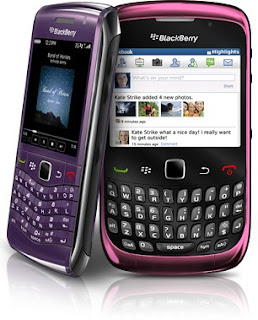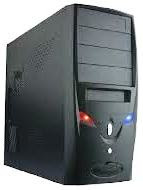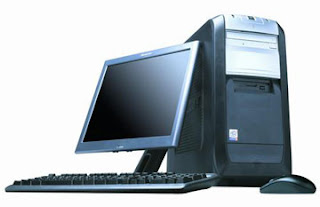september 06,2012
The computer software is the masterpiece of the entire PC. It is the control post that determines how the hardware will function in order to achieve the desired outcome. The command is all encompassing; it is inclusive of the total operations of the Computer.
Computer software is arrived at through a programming language derived and embedded in the source code of the PC. It is from this point that a set of system program translate the commands into an executable format (language) that the computer can understand and make available for use. It can be seen as the interface between the hardware and the computer user. It can be sub-divided into two categories. These are System Software and Application Software.
System Software
The system software is programs created to manage the entire computer resources. The control the input and output devices of the PC. The system software has a number of components such as the operating system software, utility software and the programming software. In fact this underlies the basis of the system software. The computer is completely useless without the operating system. Let highlight and discuss this in a considerable detail.
Operating System Software
The operating system software is a set of programs that enable the computer to receive executable instruction such as the storage of data, manage input and output devices and serve as a bridge between hardware and the application software. Examples of Operating systems are:
DOS
UNIX
XENIX
MICROSOFT WINDOWS
MAC OSX
LINKER SOFTWARE
BIOS SOFTWARE
COMPLILER SOFTWARE
LINUX
ANDROID
The operating system has a number of operating modes:
1. Single-User operating system: These are programs that allow only a single task to be executed at a time also by one single user on the PC. Example is the MS-DOS.
2. Real-time processing: This is a program that is designed to execute a given task within a set time. This type of program is mostly use by a manufacturing outfit or factories when output is measured and expected (programmed) relative to input within a set time. With this system, machines, engines and other components productivity are determined. Feed back in this process are therefore used to modify and optimised performances in compliance with set goals.
3. Multi-tasking and Multi-user operating systems: This system allows multiple tasks to be carried out at the same time and by more than one user. For example printing and downloading files from different sites at the same time. E.g. UNIX, XENIX etc.
4. Multi-access and Network operating systems: This allow more than one computer system connected together with different users operating under same system program software or single unit. This is achieved through local area network representing terminals and communication cables .E.g. NOVEL NetWare, ETHERNET etc.
Utility Software
These are those computer software programs that bring about optimum performances of the system. It serves as a check on unwanted intrusion into smooth running of the Computer software system by cleansing, analysing, maintaining and configuring the various processes for the desired outcome. Examples of Utility software are disk cleaners, virus scanners, disk drive partition utilities, backup utilities, sidekick etc.
Programming Software
This is the software use for designing and transforming the computer source code into an executable form (object code). The Computer depends on a set of coded instructions to carry out specific tasks intelligently and producing desired results as tailored for different expectations. This is what the programming software is met for.
This set the platform on which other computer depends on to function properly. Computer programming is a sophisticated process which requires knowledge of system algorithms, compilers, interpreters etc. Programming is done with high level language such as the COBOL, FORTRAN etc. The computer software programmer has the obligation of constant researches in this field so as to keep informed on latest development in this regard.
Application Software
The application software are programs designed to help computer users perform defined and specific task .E.g. Accounting software, graphic software, media player etc.
Different fields of human endeavour such as Medicine, Military, Engineering, Economics, Library Science, Architecture etc have specific application software which they used to analyse and simplify their activities.
Application software can broadly be categorised into two. The horizontal application and the vertical application. The horizontal application has a wider and general usage like the Microsoft word and Microsoft excel. Why the vertical application is narrowed to a specific niche like the accounting software. Examples of application software are as follows:
• Word Processing Application Software: This is the document processing software that make possible for typing memos, letters, curriculum vitae, reports, spelling check, search for terms, store and retrieve documents etc. Examples of this software are Microsoft word, Word star, Wordperfect, Multimate etc
• Data base Software: This is the software that makes data base operations possible. A data base is an organised compilation of structured data, which allow a systematic storage and retrieval system. Examples of data base software are oracle, clippers, paradox, MS access etc.
• Multimedia Software: This software makes it possible to create, play and manage video and audio files. Examples are Real player and Media player.
• Spreadsheet Software: This software is used for activities involving calculations in rows and columns. It is used for the plotting of graph and other mathematical related functions. Examples are Microsoft Excel, lotus 1-2-3 etc.
• Presentation Software: This is the software that is used for formatting, inserting and editing text involving graphics, drawings, images etc. Example of this software is the Microsoft Power point.
Application software can be grouped into a singular suit (Application suite) which consist of applications performing similar or inter related functions. Example is Microsoft Office and Openoffice.org .
Computer Software is a vast topic. Each of these groupings has their sub-divisions that need in-depth knowledge to apply as a software developer. So the knowledge of computer configuration and applications goes beyond mere switching on and off. It comprises of behind the contain elements that may appear a mystery but really has been simplified with recent development and discoveries.
If you find this information useful, feel free to make comment and contribution. You can subscribe to our feeds as more intelligent posts are on the way.
 />
/> />
/> />
/> />
/> />
/> />
/> />
/> />
/> />
/> />
/> />
/> />
/> />
/> />
/> />
/>